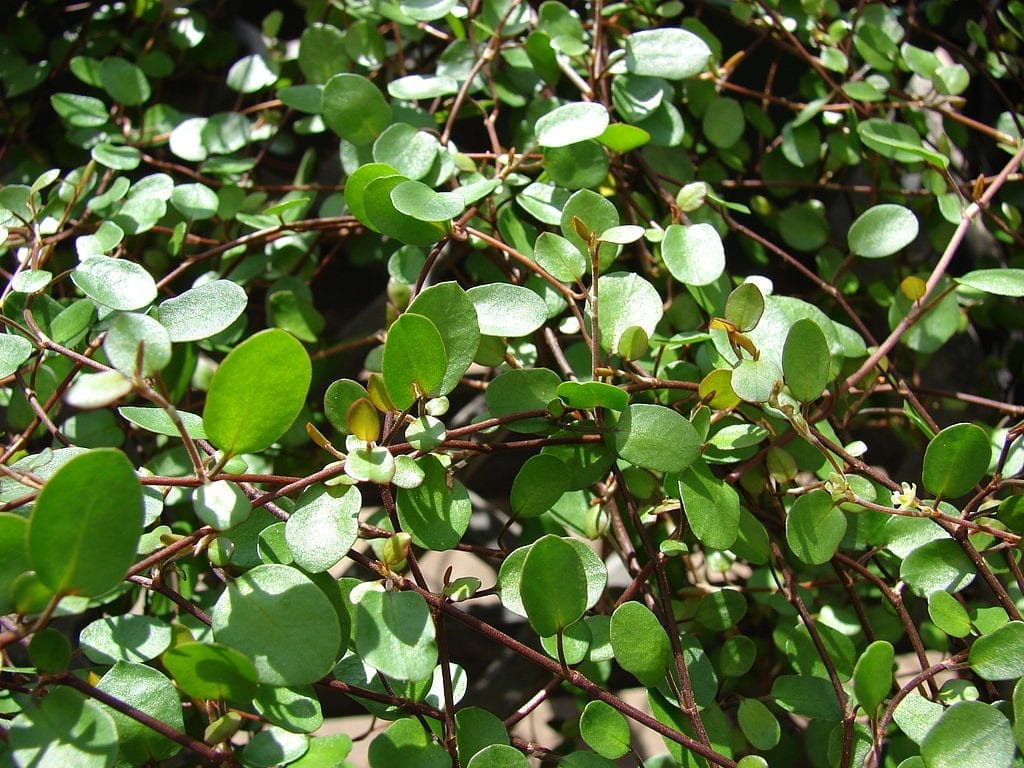
Image - Wikimedia / Forest & Kim Starr
Plants of the genus Muehlenbeckia They are climbers or ground covers suitable for all types of gardens. Its growth is quite fast; in fact, the normal thing is that they need an annual pruning to control them, but for the rest, if you need to cover a wall, lattice or floor they are the most interesting.
They are not difficult to care for or maintain, but just so there is no room for doubt, then I'm going to tell you all about them.
Origin and characteristics

Image - Wikimedia / Nagarazoku from TOKYO, Japan
Muehlenbeckia are evergreen plants native to the southern hemisphere, mainly from South America, Papua New Guinea, Australia and New Zealand. The genus is composed of more than 20 species that they are characterized by having simple, whole and greenish leaves, and also by being normally dioecious (that is, they produce separate male and female flowers). The fruits are usually white, and inside we will find a dark brown seed.
The most popular are:
- Muehlenbeckia axillaris: it is a native of New Zealand, Tasmania, New South Wales and Victoria that reaches a height of 1m. It produces thin stems with very small leaves, less than 1cm.
- Muehlenbeckia complex: it is a native New Zealand climber that can reach 5m in height. The leaves are evergreen, 0,5-2,5 by 0,4-2cm, green in color.
- Muehlenbeckia hastulata: known as quilo, molleca or voqui negro, it is a climber native to Chile that reaches a height between 2 and 5 meters. Its leaves are evergreen, 2 to 5cm long.
What are their cares?

Image - Flickr / Sam Thomas
If you want to have a copy, we recommend you take care of it in the following way:
- Location: it must be outside, in semi-shade, or in full sun if the weather is mild.
- Earth:
- Pot: universal growing substrate.
- Garden: grows in all types of soils.
- Irrigation: water 3-4 times a week in summer, and a little less the rest of the year.
- Subscriber: in spring and summer it is advisable to pay once a month or every fifteen days with ecological fertilizers.
- Pruning: late winter.
- Multiplication: by seeds and division of suckers in spring.
- Rusticity: It will depend on the species, but in principle they resist cold and weak frosts down to -5ºC. There are some, like the Muehlenbeckia hastulata, which supports up to -20ºC.
What do you think of these plants?